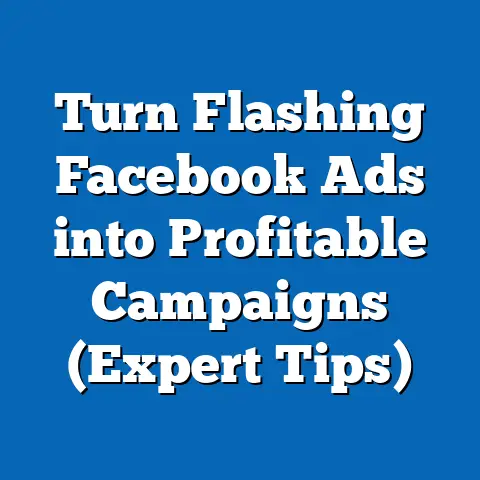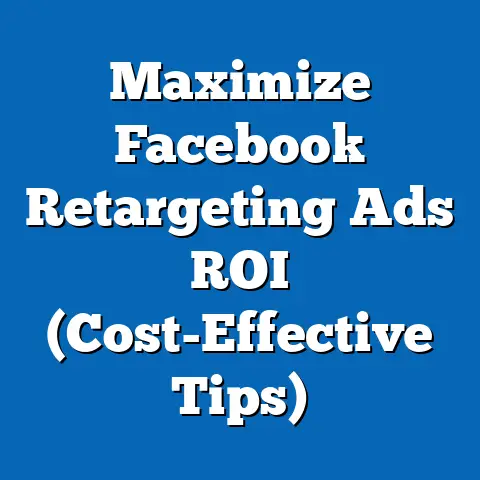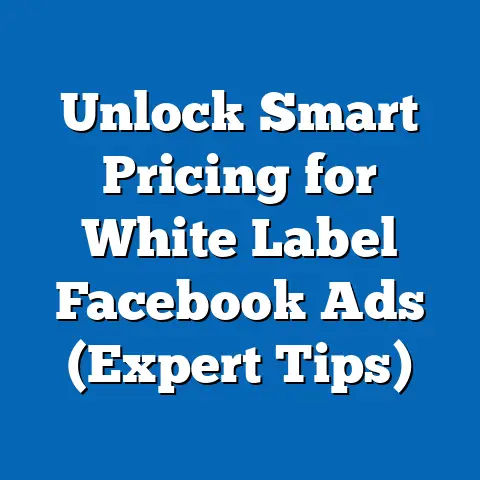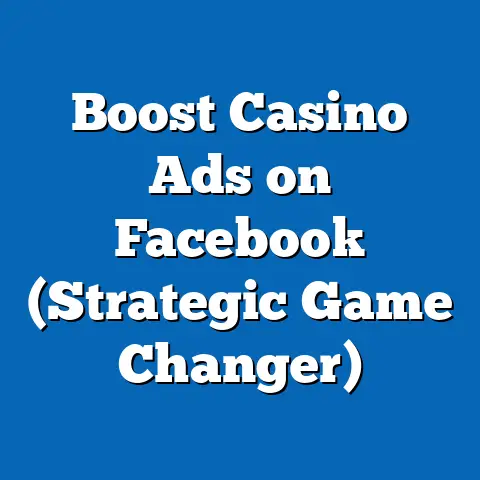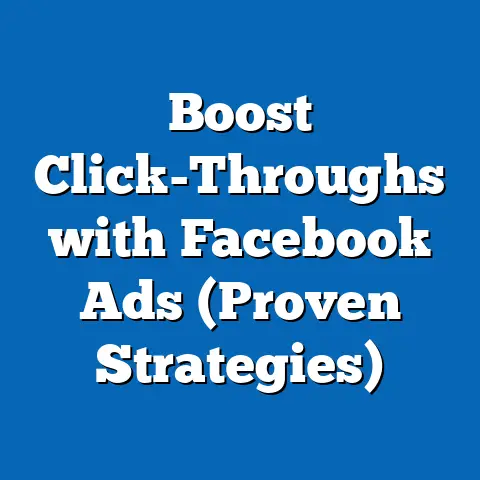Master Real Estate Ads on Facebook (Proven Strategies)
Facebook isn’t just another social media platform; it’s a powerhouse for real estate advertising unlike any other. With its massive user base, laser-focused targeting options, and a suite of robust advertising tools, Facebook offers unparalleled opportunities to connect with potential buyers and sellers. I’ve seen firsthand how a well-crafted Facebook ad campaign can transform a real estate business, turning leads into lifelong clients. While many real estate professionals dabble in Facebook ads, truly mastering them requires a strategic, thoughtful approach. It’s about understanding the nuances of the platform and tailoring your message to resonate with the right audience. Let’s dive into how you can leverage the full potential of Facebook to elevate your real estate marketing game.
Section 1: Understanding Your Audience
In the world of real estate, knowing your audience is paramount. It’s not enough to simply say you’re targeting “potential homebuyers.” You need to understand the diverse demographics that make up the real estate market. Are you trying to reach first-time homebuyers, luxury property seekers, seasoned investors, or perhaps those looking to downsize? Each group has unique needs, preferences, and pain points.
Creating buyer personas is another crucial step. A buyer persona is a semi-fictional representation of your ideal customer, based on research and data about your existing and potential customers. Give them a name, a background, and a set of motivations. This humanizes your target audience and makes it easier to craft ad content that speaks directly to their needs and desires. For instance, a “First-Time Homebuyer Felicia” persona might be highly concerned about affordability and the home-buying process, while a “Luxury Investor Larry” persona might be more interested in potential ROI and property appreciation. By understanding these nuances, you can create ads that resonate with each specific audience segment, leading to higher conversion rates.
Key Takeaway: Don’t treat your audience as a monolith. Segment your market, gather data, create buyer personas, and tailor your message accordingly.
Section 2: Crafting Compelling Ad Content
Once you understand your audience, the next step is to craft compelling ad content that captures their attention and compels them to take action. This involves a combination of captivating ad copy and visually appealing elements.
Storytelling is a powerful tool in real estate advertising. Instead of simply listing features and amenities, try to create narratives around your properties that evoke emotions and connect with potential buyers. Imagine an ad for a cozy suburban home that tells the story of a family creating memories in their new backyard. Or an ad for a modern city apartment that highlights the vibrant lifestyle and career opportunities it offers. By weaving a compelling narrative, you can make your properties more relatable and desirable.
Your ad copy should be engaging, concise, and benefit-driven. Start with a captivating headline that grabs attention and highlights the key benefit of the property. For example, “Your Dream Home Awaits: Spacious Family Home with a Huge Backyard” is more compelling than “3 Bedroom House for Sale.” Use high-quality images or videos that showcase the property in its best light. Professional photography is a must, and consider using video to create virtual tours that allow potential buyers to explore the property from the comfort of their own homes.
Finally, don’t forget a strong call to action (CTA). Tell your audience what you want them to do next. Use clear and concise language, such as “Learn More,” “Schedule a Viewing,” or “Download Our Free Guide.” Make sure your CTA is visually prominent and easy to click.
I’ve seen countless ads that fall flat due to weak copy or uninspiring visuals. But when you combine a compelling narrative, high-quality visuals, and a strong CTA, you create an ad that not only grabs attention but also drives results.
Example of Successful Ad Copy:
Headline: Escape to Your Private Oasis: Stunning Waterfront Property with Breathtaking Views
Body: Imagine waking up to the sound of gentle waves and enjoying your morning coffee on your private balcony overlooking the ocean. This stunning waterfront property offers unparalleled luxury and tranquility, with spacious living areas, gourmet kitchen, and direct access to the beach.
Call to Action: Explore the Virtual Tour Now!
Key Takeaway: Craft compelling ad content that tells a story, showcases the property’s best features, and includes a strong call to action.
Section 3: Types of Facebook Ads for Real Estate
Facebook offers a variety of ad formats, each with its own strengths and weaknesses. Understanding the different ad types and how to use them effectively is crucial for maximizing your real estate advertising efforts.
- Carousel Ads: These ads allow you to showcase multiple properties or features in a single ad unit. Users can swipe through the carousel to view different images or videos, each with its own headline, description, and CTA. Carousel ads are perfect for showcasing a portfolio of properties or highlighting different aspects of a single property.
- Video Ads: Video is one of the most engaging ad formats on Facebook. Use video ads to create virtual tours of properties, share testimonials from satisfied clients, or provide informative content about the home-buying process. Video ads can be highly effective in capturing attention and building trust.
- Slideshow Ads: Similar to video ads, slideshow ads use a series of images to create a dynamic visual experience. Slideshow ads are a great option for quickly showcasing a property overview or highlighting key features. They are also less data-intensive than video ads, making them ideal for users with slower internet connections.
- Lead Generation Ads: These ads allow you to capture contact information directly within Facebook, without requiring users to visit your website. Lead generation ads are perfect for collecting leads for open houses, property listings, or free consultations. The form is pre-populated with the user’s information from Facebook, making it quick and easy for them to submit their details.
Choosing the right ad type depends on your specific marketing goals. If you want to showcase multiple properties, carousel ads are a great choice. If you want to create a more immersive experience, video ads are the way to go. And if you want to collect leads quickly and easily, lead generation ads are your best bet.
Key Takeaway: Experiment with different Facebook ad types to find the ones that work best for your specific marketing goals.
Section 4: Leveraging Facebook Ad Targeting Options
One of the biggest advantages of Facebook advertising is its powerful targeting options. You can target users based on a wide range of criteria, including demographics, interests, behaviors, and location. This allows you to create highly focused campaigns that reach the most relevant audience for your properties.
- Custom Audiences: These audiences allow you to target users who have previously interacted with your business, such as website visitors, email subscribers, or past clients. You can upload your customer lists to Facebook and create custom audiences based on their email addresses or phone numbers. This is a great way to retarget users who have shown interest in your properties.
- Lookalike Audiences: These audiences allow you to reach new users who are similar to your existing customers. Facebook analyzes your custom audiences and identifies common traits and interests, then finds other users who share those characteristics. Lookalike audiences are a powerful way to expand your reach and find new potential buyers.
- Behavior Targeting: This allows you to target users based on their online behavior, such as their purchase history, travel habits, or interests. For example, you can target users who have recently searched for homes in your area or who have expressed interest in real estate investing.
Combining these targeting options can create highly focused campaigns that maximize reach and engagement. For example, you could create a custom audience of website visitors who have viewed a specific property listing, then create a lookalike audience to reach new users who are similar to those website visitors. By layering these targeting options, you can ensure that your ads are reaching the most relevant audience possible.
I’ve seen campaigns where simply refining the targeting options based on past engagement boosted conversion rates by over 50%. It’s all about testing, learning, and constantly refining your approach.
Key Takeaway: Leverage Facebook’s powerful targeting options to reach the most relevant audience for your properties.
Section 5: Analyzing and Optimizing Ad Performance
The final step in mastering Facebook ads for real estate is to continuously analyze and optimize your ad performance. This involves tracking key performance metrics, such as click-through rates, conversion rates, and engagement levels, and using that data to refine your ad elements and improve results over time.
Facebook Ads Manager provides a wealth of data about your ad performance. You can track metrics such as reach, impressions, clicks, conversions, and cost per result. By analyzing this data, you can identify which ads are performing well and which ones need improvement.
A/B testing is a crucial part of the optimization process. This involves creating multiple versions of your ads with different headlines, images, or CTAs, and then testing them against each other to see which version performs best. By A/B testing your ads, you can identify the elements that resonate most with your audience and optimize your campaigns for maximum impact.
It’s important to remain agile and responsive to data insights. Facebook’s algorithm is constantly evolving, so what works today may not work tomorrow. By continuously analyzing your ad performance and making adjustments based on the data, you can ensure that your campaigns are always performing at their best.
I always tell my clients that Facebook advertising is not a “set it and forget it” strategy. It requires constant monitoring, analysis, and optimization. But the rewards are well worth the effort.
Key Takeaway: Continuously analyze and optimize your Facebook ads to improve results over time.
Conclusion
Mastering Facebook ads for real estate is a blend of creativity and analytical thinking. It requires a deep understanding of your audience, compelling ad content, strategic use of ad types, and continuous analysis and optimization. By embracing these proven strategies, you can significantly enhance your visibility, engagement, and ultimately, conversion rates in the real estate sector.
Remember, the uniqueness of your approach can set you apart in a competitive market. Don’t be afraid to experiment, test new ideas, and push the boundaries of what’s possible. With a strategic approach and a willingness to learn, you can unlock the full potential of Facebook advertising and achieve unparalleled success in your real estate business.

